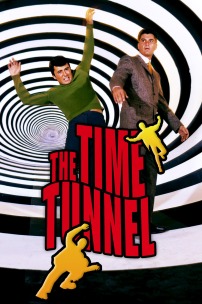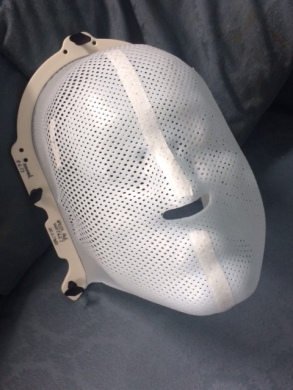Every afternoon now around 4pm, when more civilized people are taking tea beside the croquet lawn and a somnolent church-bell across the indolent meadow calls the faithful to their knees, I slide into the belly of the machine. I’m up on my linear accelerator with high speed electrons flowing, like a Hawkwind song from 1972. But the sundial on the distant church tower still shrills ‘Tempus vincit omnia‘.
Having to stay rigidly still while surrounded by high-tech isn’t the most straightforward of asks, so it helps to let the mind wander and fixate on something else. Anything else.
So I’ve been thinking about my newly-installed auricula theatre. Allow me to articulate about my auricula theatre. I may not believe in a ‘bucket list’ but I still have pet projects that I want to do.
An auricula is a small alpine plant from the primulaceae (as in primrose) family. They have waxy evergreen leaves and flower in a wide range of colours from purple-black to palest yellow-white. They’re mostly tri-colour with either a gold or light flower centre and two circular bands of colour. They look for all the world like round enameled metal badges.
They are cheap and easy to grow but the challenge with auriculas is to protect a waxy flour-like coating called the ‘farina’ from rain drops. It’s also better if you can view the pretty flowers at eye level.

The solution is an auricula theatre. It’s a bookshelf mounted on a wall and painted black. It has a lead roof to protect it from the elements. But when all is said and done, it’s about aesthetics. The weathered terracotta, the lush green foliage, the black wood, the slate-grey lead, and of course the jewel flowers. They add up to something antique. The classic ‘more than the sum of its parts’ Gestalt.
That’s the botany part, but there is a social history part that is just as interesting. The auricula is one of those ‘florist’s flowers’ that are ideal for competitive growers who want the best specimens and most spectacular new hybrids. The story has it they were brought over to England by Huguenot refugees fleeing France around 1685. One of the main places they settled was around Spitalfields in the east end of London.
Over the course of the 18th and 19th centuries the auricula societies became more organised especially in the northern cities. Being small and with easy demands, you could grow a lot of auriculas in the back yard of a back-to-back terrace. A typical day out involved the showing and judging followed by a simple ‘shilling supper’ and a good supply of fine ale. I’m sure they were always a great affair.
Rich people liked auriculas too. My first proper exposure to them was at Calke Abbey in Derbyshire. I like Calke Abbey. The NT has left it in a dilapidated, non-restored state to show what the decline of an English country house looks like. Not that this affects the garden quite so much. Calke Abbey has a unique auricula theatre that is more like an altar or a small temple than a bookcase. The first time I saw it in the summer of 2004 I was a bit snooty because it was populated with Geraniums and I ‘just felt it was wrong’. What a pompous thing to think. They’d probably temporarily replaced the auriculas for a summer display of colour as the auricula is over by end May. That’s what I have decided to do for the summer. I’ve put my auriculas in a cool bright spot and I’m using Gerberas as a summer replacement. It’s an experiment.
To go back to the weavers of Spitalfields, they were noted for their love of flowers and plants. The first artisan botanists, using their natural knowledge. It’s one of the main reasons why the Columbia Road flower market in Bethnal Green exists and persists even to this day.
What I didn’t know is that the Huguenots were soon followed by Irish weavers in the mid-1700s following a crisis in the Irish linen industry. The market for silk had its share of downturns and taxes over the decades, but still employed 50,000 homeworkers working for master weavers on a ‘putting out’ basis. Think freelance, zero hour contracts. There were regular protests and riots against threats to wages, with the usual reprisals. In 1769, for example, the Spitalfield riots ended with an Irish and a Huguenot weaver being hanged in front of the Salmon and Ball pub in Bethnal Green. Poor John Doyle, poor John Valline, hanged December 6th 1769 on false informer evidence paid for by a master weaver called Lewis Chauvet. Over the following years, many of the Irish left weaving to work on the building of the nearby London docks.
So, I had to have an auricula theatre of my own. I dithered over it for years so it was lucky when it showed up as a birthday present back in May.
There needs to be a lot of optimism in gardening. When I was a Psychologist, I had to know about things like the Eysenck Personality Questionnaire (EPQ). I can’t recall which test it was in, and it may have been revised many times since, but one of the questions that often made me smile was whether you planted spring bulbs in autumn. It was an indicator of optimism.
Me. I plant trees.
As you may imagine, cancer and optimism are tricky companions. Too little optimism, and you may ‘turn your face to the wall’ with negative survival consequences. Too much, you’ll be annoying at best and may turn to radical solutions such as only eating raw vegetables as your alternative to chemotherapy. You have to be realistic and aspire to becoming what Philip Larkin calls ‘The Less Deceived‘. Cancer is your death growing inside you. It probably likes raw vegetables. Keep the body healthy for us, for we are many and our name is Legion.
All around me are plausible reasons for pessimism. This week, for example, the Swedish actor Michael Nyqvist died aged 56 after “a year long battle with lung cancer”. He was in the original ‘The Girl with the Dragon Tattoo‘ film. Born in November 1960, he was a bit younger than me. But, a “year long”? That’s no fucking time at all. What am I doing still kicking along after 8 years?
There is a recently published online tool for people with a diagnosis of colorectal cancer called the QCancer®-2017 (colorectal, survival) risk calculator. It’s driven by data obtained from many thousands of GPs in the UK. If I pretend it is 2009 again and I’ve just been diagnosed with my stage 4 CRC, it gives me an overall survival probability after 10 years of just 2.6%. If I tell it the truth that I have already survived for 8 years, then the probability of making it 2 more years to 10 years goes up to 60%.
I’m going to plant at least one more tree.


 the R336 in Connemara that goes past the Failmore River. We usually go up to the summit and then back down again. The Failmore River itself joins the Beanlanabrack River east of Maam Bridge just before it enters Lough Corrib.
the R336 in Connemara that goes past the Failmore River. We usually go up to the summit and then back down again. The Failmore River itself joins the Beanlanabrack River east of Maam Bridge just before it enters Lough Corrib.

Recent Comments